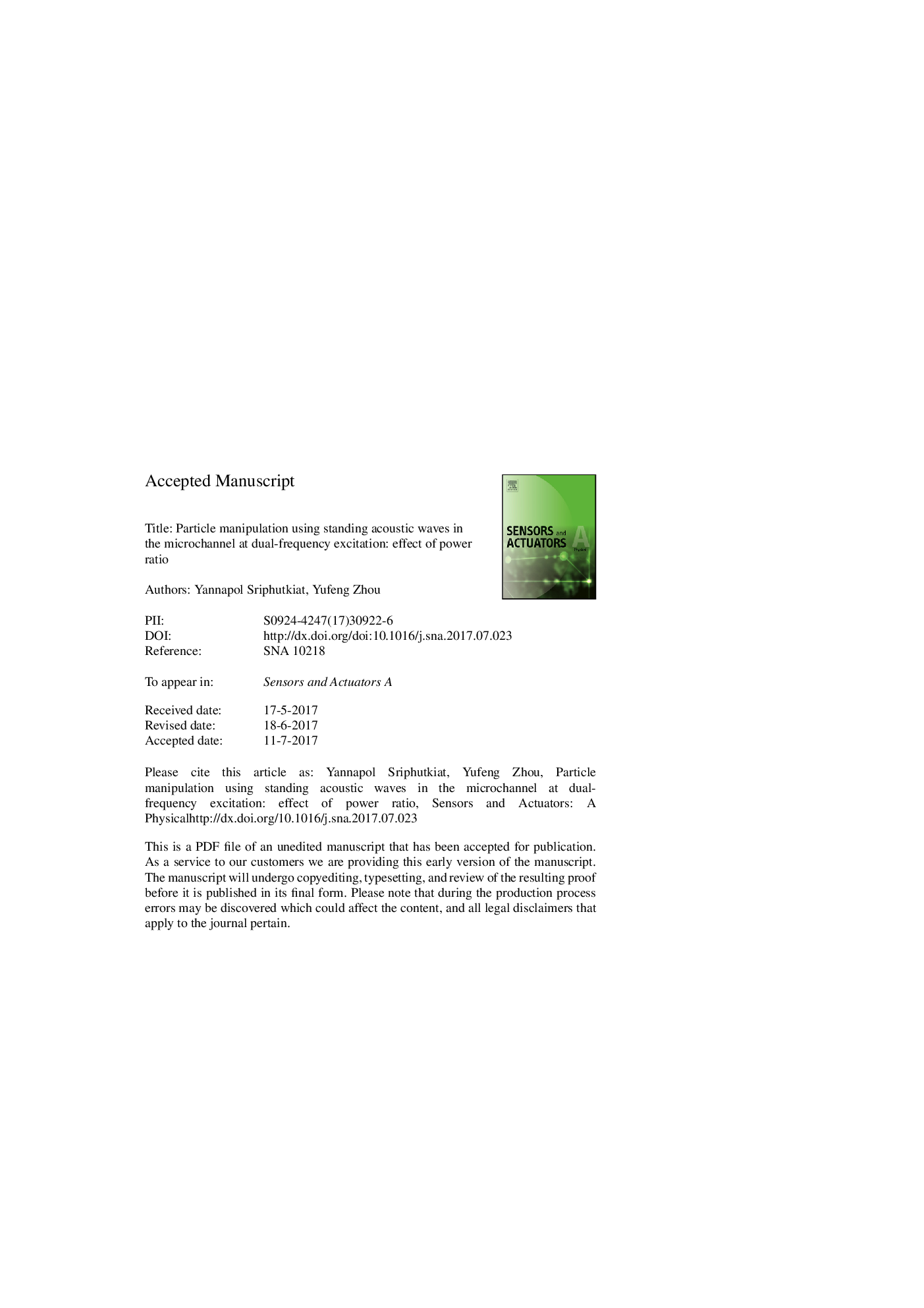| Article ID | Journal | Published Year | Pages | File Type |
|---|---|---|---|---|
| 5008074 | Sensors and Actuators A: Physical | 2017 | 20 Pages |
Abstract
Tuning ability is important for cells and microparticles manipulation on-chip, but is usually limited. Dual-frequency excitation, the fundamental frequency and its third harmonic of a pair of interdigital transducers (IDTs) simultaneously, was used to generate the standing acoustic waves in a microfluidic channel. By changing the power between these two excitation frequencies, the amplitude and distribution of resultant acoustic radiation force on microparticles lead to reconfigurable patterns, such as the number and position of the pressure nodes and the corresponding percentage of particles accumulated at each pressure node. If the power ratio of the fundamental frequency is higher than â¼90%, the accumulation time to the center of microchannel could be reduced by up to â¼2 fold. In comparison, if less than this threshold, there will be 3 pressure nodes. With the decrease of the power ratio of the fundamental frequency, two side nodal lines gradually move toward the positions produced by the third harmonic only with more microparticles accumulated.Experimental observation has a good agreement with the numerical predictions. This proposed method has the advantages of wide tunability, non-invasiveness, and easy integration to the lab-on-a-chip system with few changes on the experimental setup.
Related Topics
Physical Sciences and Engineering
Chemistry
Electrochemistry
Authors
Yannapol Sriphutkiat, Yufeng Zhou,
